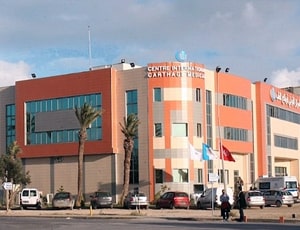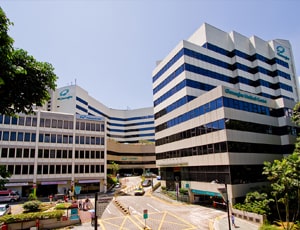A Bentall procedure is a surgery that is conducted to rectify problems associated with the aorta, the largest artery in the human body. An aorta carries oxygenated blood from the heart to the rest of the body.
The Bentall procedure is used for the treatment of joint disease of the ascending aorta and the aortic valve. During this procedure, a composite graft is used to replace the aortic valve, aortic root, and the ascending aorta. When the replacement of any of these components is not required, then some alternative surgery may be carried out instead of Bentall procedure.
The following are some of the problems with the aorta and aortic valve that are treated with the help of Bentall surgery
Bentall procedure is a complex surgery that must be performed by experienced and skilled cardiothoracic surgeons. It requires a prolonged hospital stay as compared to other cardiac surgeries and the patient requires greater monitoring at the hospital and home.
Some of the factors that affect Bentall surgery cost include the following:
Treatment cost

Taoufik Clinique located in Tunis, Tunisia is accredited by JCI. Also listed below are some of the most prominent infrastructural details:

Apart from in-detail treatment procedures available, Ezzahra Clinic located in Ez Zahra, Tunisia has a wide variety of facilities available for International Patients. Some of the facilities which are provided by them are Accommodation, Airport Transfer, Choice of Meals, Interpreter, SIM, TV inside room. Also listed below are some of the most prominent infrastructural details:

Apart from in-detail treatment procedures available, Carthage International Medical Center located in Monastir, Tunisia has a wide variety of facilities available for International Patients. Some of the facilities which are provided by them are Accommodation, Airport Transfer, Choice of Meals, Interpreter, SIM, TV inside room. Also listed below are some of the most prominent infrastructural details:


Apart from in-detail treatment procedures available, Hannibal International Clinic located in Tunis, Tunisia has a wide variety of facilities available for International Patients. Some of the facilities which are provided by them are Accommodation, Airport Transfer, Choice of Meals, Interpreter, SIM, TV inside room. Also listed below are some of the most prominent infrastructural details:

Parkway East Hospital located in Joo Chiat Pl, Singapore is accredited by JCI. Also listed below are some of the most prominent infrastructural details:

Types of Bentall Procedure in Medanta - The Medicity and its associated cost
| Treatment Option | Approximate Cost Range (USD) | Approximate Cost Range (INR) |
|---|---|---|
| Bentall Procedure (Overall) | 8938 - 13579 | 732460 - 1118777 |
| Modified Bentall Procedure | 7701 - 11372 | 657779 - 926767 |
| Hemispherical Bentall Procedure | 9583 - 13800 | 796468 - 1148391 |
| Valve-Sparing Bentall Procedure | 10085 - 14769 | 838049 - 1225496 |
DOCTORS IN 14 SPECIALITIES
FACILITIES & AMENITIES

Mount Elizabeth Hospital located in Singapore, Singapore is accredited by JCI. Also listed below are some of the most prominent infrastructural details:

Types of Bentall Procedure in Apollo Hospitals and its associated cost
| Treatment Option | Approximate Cost Range (USD) | Approximate Cost Range (INR) |
|---|---|---|
| Bentall Procedure (Overall) | 8967 - 13587 | 747241 - 1096445 |
| Modified Bentall Procedure | 7748 - 11076 | 659538 - 918673 |
| Hemispherical Bentall Procedure | 9400 - 14097 | 788276 - 1150944 |
| Valve-Sparing Bentall Procedure | 9990 - 14554 | 816291 - 1180402 |
DOCTORS IN 14 SPECIALITIES
FACILITIES & AMENITIES

Types of Bentall Procedure in Venkateshwar Hospital and its associated cost
| Treatment Option | Approximate Cost Range (USD) | Approximate Cost Range (INR) |
|---|---|---|
| Bentall Procedure (Overall) | 8127 - 12122 | 662805 - 995065 |
| Modified Bentall Procedure | 7117 - 10154 | 583474 - 828882 |
| Hemispherical Bentall Procedure | 8634 - 12733 | 708751 - 1036883 |
| Valve-Sparing Bentall Procedure | 9161 - 13258 | 750879 - 1079100 |
DOCTORS IN 13 SPECIALITIES
FACILITIES & AMENITIES

Gleneagles Hospital located in Napier Road, Singapore is accredited by JCI. Also listed below are some of the most prominent infrastructural details:

Types of Bentall Procedure in Star Hospitals and its associated cost
| Treatment Option | Approximate Cost Range (USD) | Approximate Cost Range (INR) |
|---|---|---|
| Bentall Procedure (Overall) | 7391 - 11081 | 605666 - 918206 |
| Modified Bentall Procedure | 6589 - 9312 | 536834 - 769963 |
| Hemispherical Bentall Procedure | 8057 - 11551 | 648538 - 962230 |
| Valve-Sparing Bentall Procedure | 8298 - 12209 | 679586 - 1007513 |
DOCTORS IN 12 SPECIALITIES
FACILITIES & AMENITIES

Types of Bentall Procedure in Global Health City and its associated cost
| Treatment Option | Approximate Cost Range (USD) | Approximate Cost Range (INR) |
|---|---|---|
| Bentall Procedure (Overall) | 8853 - 13671 | 731799 - 1094790 |
| Modified Bentall Procedure | 7890 - 11443 | 631863 - 930211 |
| Hemispherical Bentall Procedure | 9537 - 13898 | 795081 - 1163008 |
| Valve-Sparing Bentall Procedure | 10219 - 14333 | 841170 - 1191955 |
DOCTORS IN 14 SPECIALITIES
FACILITIES & AMENITIES

Types of Bentall Procedure in Fortis Malar Hospital and its associated cost
| Treatment Option | Approximate Cost Range (USD) | Approximate Cost Range (INR) |
|---|---|---|
| Bentall Procedure (Overall) | 8141 - 12173 | 662738 - 996574 |
| Modified Bentall Procedure | 7104 - 10176 | 585388 - 832773 |
| Hemispherical Bentall Procedure | 8663 - 12710 | 709637 - 1037338 |
| Valve-Sparing Bentall Procedure | 9141 - 13256 | 750734 - 1087057 |
DOCTORS IN 9 SPECIALITIES
FACILITIES & AMENITIES

Types of Bentall Procedure in Artemis Health Institute and its associated cost
| Treatment Option | Approximate Cost Range (USD) | Approximate Cost Range (INR) |
|---|---|---|
| Bentall Procedure (Overall) | 8900 - 13651 | 743362 - 1128626 |
| Modified Bentall Procedure | 7993 - 11212 | 658432 - 942951 |
| Hemispherical Bentall Procedure | 9575 - 14103 | 795405 - 1161103 |
| Valve-Sparing Bentall Procedure | 10309 - 14682 | 834202 - 1185203 |
DOCTORS IN 15 SPECIALITIES
FACILITIES & AMENITIES

Types of Bentall Procedure in Sterling Wockhardt Hospital and its associated cost
| Treatment Option | Approximate Cost Range (USD) | Approximate Cost Range (INR) |
|---|---|---|
| Bentall Procedure (Overall) | 8111 - 12184 | 664974 - 1000948 |
| Modified Bentall Procedure | 7075 - 10148 | 584044 - 831063 |
| Hemispherical Bentall Procedure | 8669 - 12707 | 705529 - 1044660 |
| Valve-Sparing Bentall Procedure | 9107 - 13234 | 748423 - 1084417 |
DOCTORS IN 14 SPECIALITIES
FACILITIES & AMENITIES
A Bentall procedure is a surgery conducted to correct problems associated with the largest artery in the body, the aorta. The aorta carries oxygenated blood from the heart to the rest of the body. Thus, any problem with this important artery may affect the rest of the body and cause serious complications.
A Bentall operation is conducted to correct problems associated with the aorta. Some of the problems that are resolved with the help of a Bentall surgery include the following:
Bentall procedure recovery time varies from one patient to the other. It actually depends on the overall health of the patient and how successfully the procedure was conducted. Immediately after the procedure, you can expect to spend a day or two in the intensive care unit (ICU). During your stay in the ICU, you will be connected to machines that monitor your vital signs such as breathing, temperature, heart rate, and blood pressure.
You should take time to recover well after the surgery. Do not rush things and start with the normal routine as soon as you are shifted back home. You are likely to spend a few days in a normal hospital room before discharge. The surgeon will monitor your progress and give a green signal for discharge at the right time. You must take care of the wound and stitches once you get home. Additionally, make a note of any discomfort, palpitations, pain, fever, blurred vision, and poor appetite and inform it to your doctor. It may take around six to eight weeks to regain normal mobility. Take help from a nurse or a family member while lying down or standing up. You will be taught a safer technique to roll and sit in bed. Remember to follow whatever your doctor suggests you to minimize your recovery duration.
Ask your healthcare adviser for the best multiple options and choose the one that meets your expectations
The Bentall Procedure package cost in Tunisia varies from one hospital to another and may offer different benefits. The top hospitals for Bentall Procedure in Tunisia covers all the expenses related to the pre-surgery investigations of the candidate. Typically, the package cost of Bentall Procedure in Tunisia includes the expenses related to the surgeon's fee, anesthesia, hospital, meals, nursing and ICU stay. A prolonged hospital stay due to delayed recovery, new diagnosis and complications after surgery may increase the cost of Bentall Procedure in Tunisia.
There are several best hospitals for Bentall Procedure in Tunisia. For quick reference, the following are some of the leading hospitals for Bentall Procedure in Tunisia:
The recovery of the patient many vary, depending on several factors. However, on an average, patient is supposed to stay for about 28 days in the country after discharge. This is important to ensure that the surgery was successful. During this time, control and follow-up tests take place to check for medical fitness.
Apart from the Bentall Procedure cost, there are a few other daily charges that the patient may have to pay. These are the charges for daily meals and accommodation outside the hospital. These charges starts from USD 50 per person.
Some of the cpopular cities in Tunisia that offer Bentall Procedure include the following:
After the Bentall Procedure takes place, the average duration of stay at the hospital is about 7 days. This phase is important to ensure that the patient is recovering well and is clinically stable. During this time, several tests are performed before the patient is deemed suitable for discharge.
There are more than 4 hospitals that offer Bentall Procedure in Tunisia. These clinics have propoer infrastructure as well as offer good quality of services when it comes to Bentall Procedure These hospitals comply with all the rules and regulations as dictated by the regulatory bodies and medical association in Tunisia